So, You Decided to Run Terrestrial Radio Ads…
Why: You wanted to achieve mass reach, with a low CPM, to reach a captive audience. You know your target demo is there, and 93% of U.S. adults still listen to AM/FM radio each week! It’s a no-brainer, right? Right?
Radio listening is quite literally “wireless”. There is no meter to measure actual usage. There are no tickets sold, there are no circulations audited. There is no quantifiable “click-through” to point back to. The ratings systems of Nielson, Arbitron and holding companies Cumulus and iHeartMedia (formerly Clear Channel) don’t have quantifiable metrics to track listenership at given times. So, as marketers, we are to assume that listeners hang out in-between music blocks or sports talk breaks and don’t change the station. Yep, just like consumers don’t fast forward through DVR’d TV shows or pick up their phone during commercial breaks.
“The results indicated that 44% of listeners said Internet Radio was displacing time formerly dedicated to AM/FM broadcast radio stations.”
– Xapp Media survey.
Radio’s Mass Reach:
Let’s break down the perceived “mass reach” benefits of radio with some metrics that are available. Nielson reports that 93% of adults 18-54 report listening to the radio each week. That seems impressive enough at face value. But when peeling back the layers on this stat and applying some logic, it tells a very different story:
- The average time per day spent listening to the radio is 1 hour, 52 minutes.
- This listenership number accounts for the total short-bursts of listening. Think to/from work commutes. It accounts for ALL radio listening, it’s not linear or specific to a single station.
- The average person also sleeps approximately seven hours a night, i.e., there is a maximum of seventeen listening hours per day that one could possibly be listening to the radio.
- Radio ads are most often featured in “cluster breaks” of 6-10 segments. So, how many listeners changed the station before your ad was delivered? There is no visibility or methodology to track this metric, or where listenership fell off during cluster breaks.
You could produce the best radio ad in history and a large slice of the listeners will never hear it. Never mind that you don’t know who IS listening, demographic-wise. It’s all antiquated guesstimation from systems developed decades ago.
Consumers don’t want ads, they want content. They don’t want to be talked AT they want to be talked WITH. Mediums like terrestrial radio cannot and will not ever be a two-way conversation.
Based on the above stats, are advertisers to assume that an ad-buy reached a critical mass of the station’s total listenership? Did you also know that radio advertisers inflate their listenership number estimates based on ‘ancillary listeners’? Those that might overhear a radio that’s playing, whether they are in a car, on a job site, or in an office?
The simple fact is this: As a metric, reach doesn’t matter when guessing is a factor. It’s shaky math, at best. Further, if you want to achieve mass reach with a quality marketing piece, wouldn’t it be advantageous to deploy that marketing piece across a medium that is shareable? In the last 15 years, has anyone ever told you personally or sent you a message about “this sweet radio ad I just heard and thought of you”? No. There is zero virality built into this medium, and that is a brand death-sentence in a society where virality and the ability to share with your peers is everything.
Radio Ad Buys: A Not-So-Hypothetical Scenario
It’s a bit of a trope, but let’s use this example as a hypothetical exercise: “Males 18-54 listen to sports talk radio.” let’s say that you are a car dealer, and you want to run radio ads to reach this demo in your market about your dealership’s truck sales:
- Radio Ad Spend: $15k
- Monthly Reach: 150k
- CPM = $100 ($0.10/impression)
Let’s call our hypothetical sports radio listener “Radio Rick”. What do we know about our target buyer Radio Rick based on what our advertiser told us? We know he’s male, between the ages of 18-54, and we know that he’s listening to the radio every week. This sets up perfect – Rick is right there for the taking and is waiting to hear about your new trucks!
Do we know anything else about Radio Rick to create a relevant message and pique his interest in our dealership?
- Is Radio Rick even looking to buy a car? Maybe Radio Rick did hear your truck ad and he’s currently in the market! But he was in the car driving and couldn’t get your number down fast enough. He forgot the name of your dealership and then ultimately turned to alternate sources to search out trucks.
- What is Radio Rick’s income level? Is he single/married? Is it a joint-purchase decision or is he the sole decision maker? Rick might be a decision maker, but Mrs. Rick is going to likely have a say, too. Where is she?
- Radio Rick may be the one purchasing a car, but is he the actual person that will be driving it? What if Rick is shopping for a mid-size sedan with high-MPG and best in class safety ratings for his teenage daughter? We can assume that Mrs. Rick is probably going to have a say in this as well.
- What type of car/truck does Radio Rick currently drive? Does he have brand affinity towards a certain manufacturer, or dislike others based on past experiences? Is he looking to make a change or upgrade his current vehicle? Does Rick have friends or family that he’s talking to about THEIR new car or truck to get feedback?
- Is Radio Rick interested in buying a new car or truck because of family or lifestyle changes? What are these lifestyle changes? How have Rick’s auto needs shifted from where they were previously?
With all these unknowns about reaching Radio Rick, did we, the advertiser, consider that the average person buys 9.4 cars IN THEIR LIFETIME? What is the maximum number of 150k radio listeners, in a month, that are making a purchase decision on something that they do 9.4x in their entire lifetime?
This ‘singular message’ radio ad hypothetical is not a stretch. I have personally (painstakingly) listened to a full ad-blocks on sports radio with back-to-back ads from auto dealers that ranged from Ford SUVs to KIA sedans, to Buick-GMC Trucks.
The reason that there is such a wide spectrum of makes and models is that even the advertisers have no visibility into what type of vehicle that Radio Rick is looking to buy, or if he’s in the market to buy PERIOD.
Terrestrial radio may still be a factor in consumer’s audio consumption habits, but it’s losing steam to other formats audio Sirius/XM, and streaming “on-demand” audio services like Pandora, Spotify, iHeart Radio, and podcasts.
So, while 94% of consumers may still be listening to the radio each week, there’s still only 24 hours in a day. And the time that consumers are spending on alternative media platforms is on the rise. Radio ads are vastly overpriced based on the attention they are delivering, and the value delivered has gone down considerably. In fact, AM/FM radio makes up only an average of 17% of 18-55 consumer media time (across all measured media).
According to a report just released by Edison Research, there are 42M people listening to podcasts weekly, which continues to rise year-over-year. On-demand audio continues to be on the rise, and it’s taking away share from where traditional radio listening is happening (home, commutes, work). On smartphones, podcasting’s Share of Ear is now tied with AM/FM content and leads AM/FM among 13-34-year-olds. Podcast listeners also skew higher in education level and HH income. To find out more about the rise of podcasting, check out the full report here.
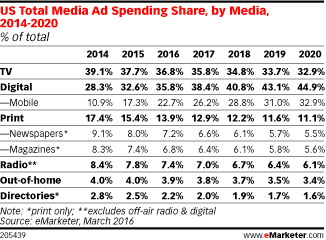
Ad dollars are going away from traditional outlets across the board, but the radio ad pricing model and rates haven’t adjusted to make radio, as an ad channel, more palatable to advertisers.
The Age of the Pro-Active Customer (The Pro-Sumer)
It’s 2017, consumers are proactive when making purchase decisions, not reactive. Time and convenience is the delta. Consumers do not spend their time going to dozens of dealerships, banks or insurance companies. They can go online to view full inventories and offerings, compare, and read reviews.
You may get their attention for a fleeting second, but how powerful and impactful was that 30-second ad in their final purchase decision? All data suggests that it’s minimal, at best. Consumers don’t wait for advertisers to come to them when they need to make a major purchasing decision, whether it’s a new car, a home loan, or a family vacation. The consumer has assumed the power. Here’s the good news: there is a magical way to reach consumers that are out there that are actively in the market for your product or service. You can deploy your paid media dollars to those consumers, with a targeted message, trackable ROI/impressions, and a lower cost.
It’s called intent-based marketing. It’s about relevance and meeting your customer’s needs and motivations.
Top-of-funnel awareness and reach still matter (to a point). But in a digital ecosystem with so many purchasing touch-points for a consumer, markets need to adopt a range of alternate channels for ad-delivery that are more efficient and provide refined targeting, while adding more value and delivering a stronger ROI long-term.
Intent-Based Marketing: Enter Google AdWords/Paid Search:
Consider purchase behaviors for something like car shopping. The average consumer has access to hundreds of tools online to research, compare, and make decisions without stepping onto a lot. When they do step onto a dealership’s lot, they are armed with information and have already encountered dozens if not hundreds of digital touch-points in their discovery phase. This is your missed opportunity as the advertiser to grab their attention and add-value where it matters.
Intent-based marketing is a natural fit for reaching consumers actively shopping, but what about mass-reach for branding and awareness for those consumers that haven’t started their purchasing cycle – or reaching those that have on alternate channels from search?
Intent-Based Marketing Meets Brand Awareness: Enter Social Media:
There’s a natural pushback from advertisers that have run traditional media for years when dealing with social media. There’s concern over “their audience not being there” or “that’s just for kids” or “that’s not how we sell our product”. The answers to these common push-backs is Yes, they are there. According to comScore, eMarketer & Nielsen:
- 66% of all digital time is spent on a mobile device
- 89% of all mobile device time is spent on apps.
- 49% of mobile app time is on social media and messaging apps.
Social media may not be how you have sold your product or service in the past. But it is but it is how consumers shop, and it is the current and future state of the marketplace. Social media is where the consumer attention is. The answer is yes, this is where your customers are, and so you need to be there to reach them.
Facebook is where marketing and sales meet. It’s the single most powerful branding and advertising vehicle in history. It’s truly underpriced, based on the detailed level of targeting it offers compared to traditional media like radio.
Let’s jump back to potential truck buyer Radio Rick for a minute and all the unknowns about his purchasing intent and brand preferences.
Facebook’s audience data is backed by Oracle Cloud Data and IHS Automotive (Polk). It provides clear, data-driven visibility and access to the previous unknowns about your audience. Car dealers can leverage the customer data they already have and reach ideal target customer profiles (age, income, brand affinity, location, etc.) Most importantly, they can reach consumers that are in the market to buy or lease a new or used vehicle in the next 3-6 months.
Household Income: You know that most of your new truck buyers fall between $75k-250k
Brand Affinity: You can target vehicle owners that have affinity towards specific makes/models
Purchase Intent: You can target based on those currently in the market or those that are likely to be in the market in the next 6 months.
Location: Target ads only to buyers within 30 miles of your dealership
What about Radio Rick’s cousin, Radio Rob, who matches all the same criteria that Rick does? He bought a new Ford F-350 six months ago. Do you want to be spending ad dollars on reaching Rob if you are a Chevy dealer? What is the likelihood that Radio Rob purchases another vehicle or to switches brands when he’s clearly happy with Ford? Rob is not a high-intent customer, and you can remove these less-desirable targets on social media altogether. See ya, Rob!
Hundreds of other targeting options can be layered in to help refine social ad targeting. The crux is that advertisers can deliver better messaging to well-defined audiences, at a lower cost.
While we’re talking data, let’s set aside the stigma of Sports Radio = Men = Trucks. Women drive trucks, and women listen to sports radio. Radio Rick’s wife certainly has her own set of purchase considerations and needs that are different from that of Rick’s. Shouldn’t your brand focus on the purchase considerations for all parties involved?
Below is a sample of basic data available on Facebook for customer profile that you could target around to reach “truck buyers” in the Kansas City Metro area. For the same $15k ad-spend, I can reach my desired audience and access targeted consumer data points with clear visibility to who my desired customers are.
This is slightly more refined than reaching “18-55-year-old men that listen to sports talk radio”:
A Daily Reach of 250k – and total audience size of 920k. That’s a daily CPM of $60 ($0.06/impression) compared to the monthly $100 CPM of the same radio buy spend.
Kansas City Metro Area: Men and women, Age 25-55
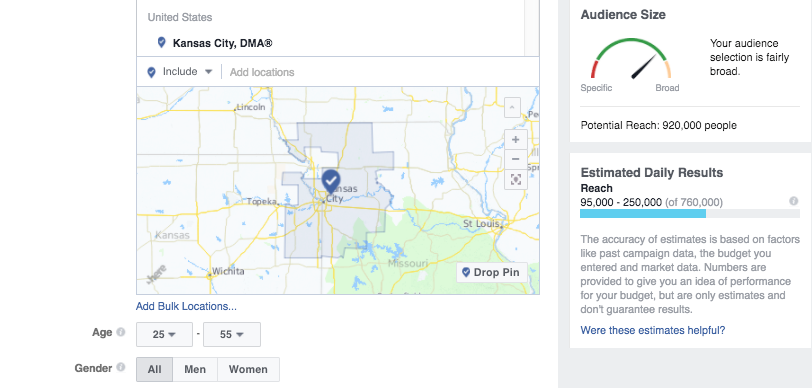
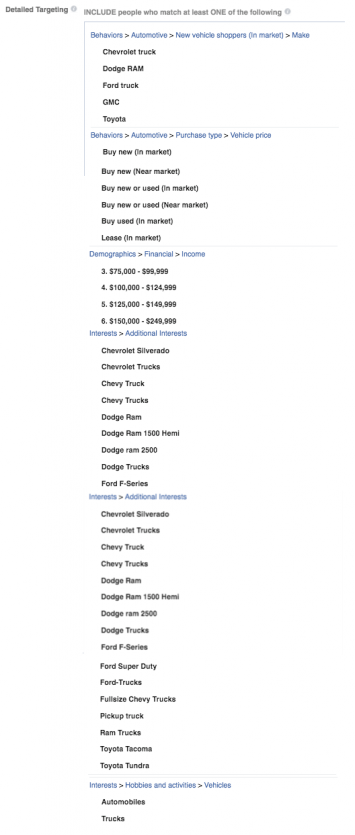
The ultimate value is that you, the advertiser, aren’t restricted to the blanket messaging of a radio buy. This data can be used to target custom messages to each segment based on their defined characteristics—messaging that will resonate with the individual and their specific needs:
- Consumers that show high-affinity to my competitors’ brands can be shown information on what makes my brand and models better.
- Consumers interested in leasing versus purchase, or in new versus pre-owned vehicles.
- Consumers that are in the market for a car purchase targeted down to their actual model preferences:
- Is this Radio Rick’s next truck?
- Is it a family SUV/Crossover because there’s a Radio Rick Jr. on the way?
- Is it his daughter’s sedan, or is it his weekend sports car?
All these data points are accessible through Facebook Ad consumer data, and they allow advertisers to meet the customer’s specific needs with ads that deliver what they want to see.
Here is the rub and the take away when looking at radio advertising as part of your marketing mix in a 2017 digital first world.
Consumer listening habits have shifted from “listening to what’s on” to an on-demand, listen to what they what, when they want, on their own timeframe. Audio has shifted into an on-demand landscape where consumers can stop/start their content on their terms, not a continuous stream.
Is radio bad? Annoying, and off the mark, yes, but it’s not inherently evil. Is it overpriced based on consumer attention and limiting your ability to reach your customers? 100% yes.
Want to learn more about implementing audience-targeted digital campaigns? Contact us here to get started.

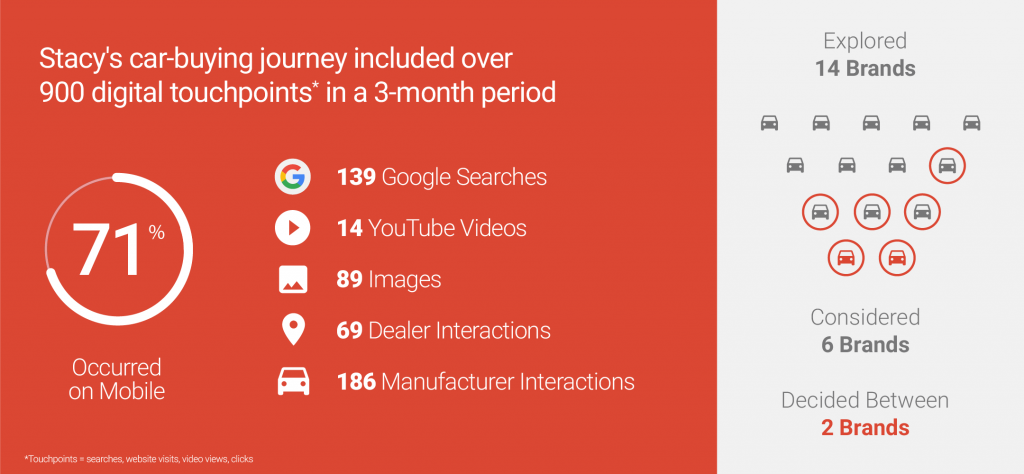
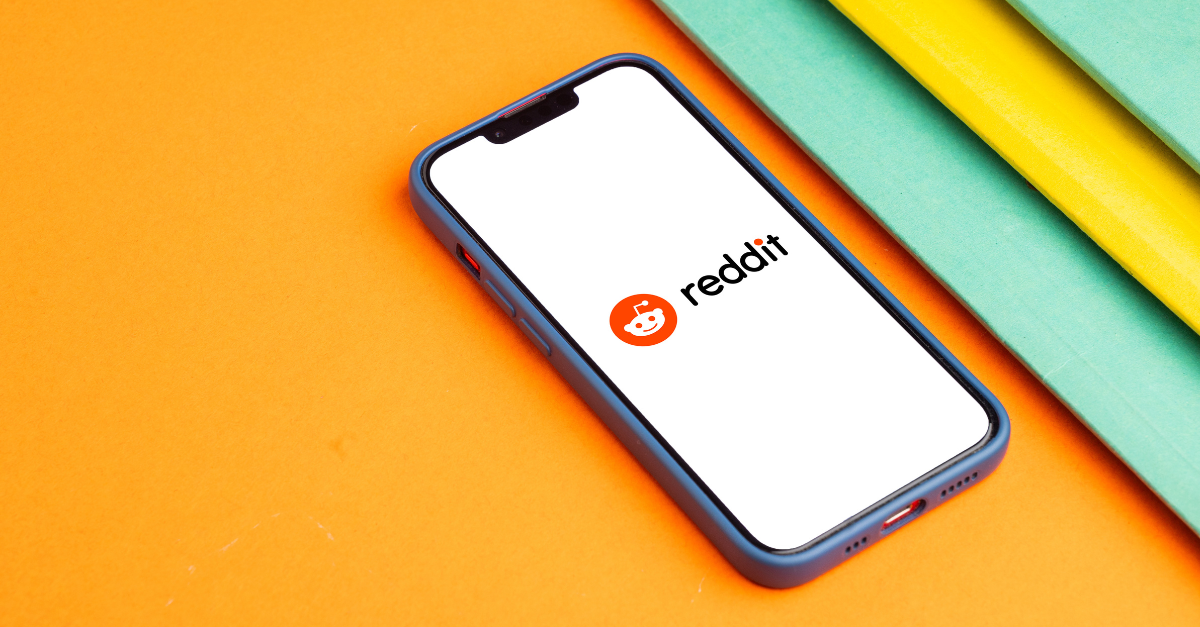

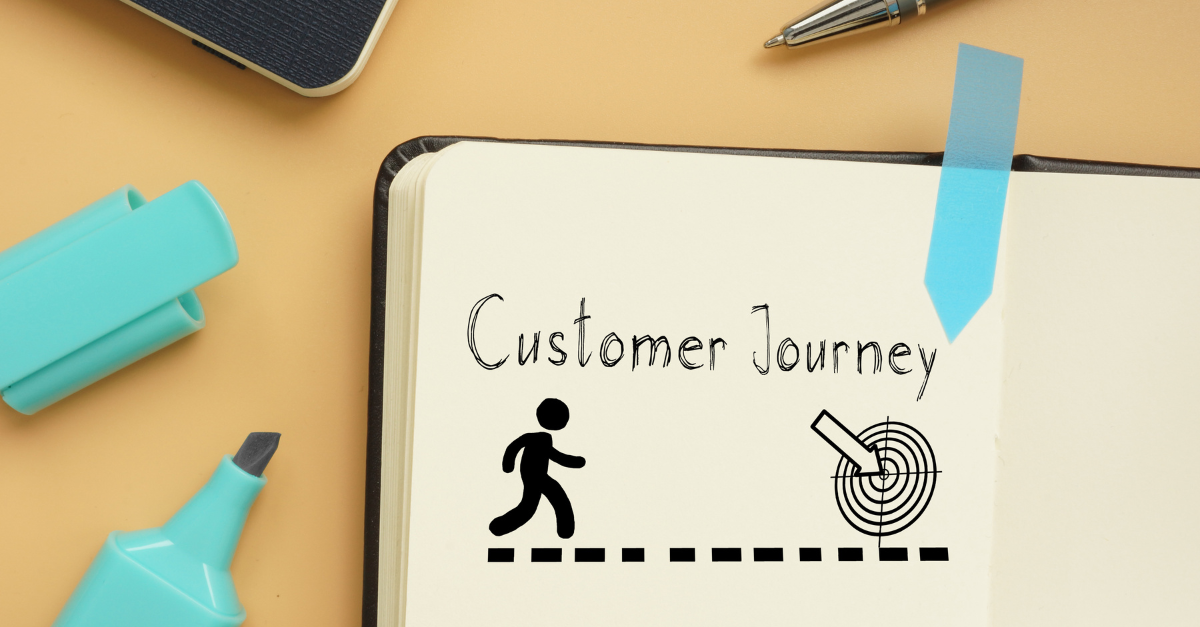
Really enjoyed reading this blog…and I’m a radio rep! Actually I’m a marketing rep because I work for a company that does radio AND digital really well. I’m lucky.
p.s. I can’t remember the last time I sold a campaign at a CPM of $100 (I’m always well, well below this); I’m interested where exactly you’re gathering your information in order to make this point? KC radio rates? Certainly not…! I suggest maybe you take another, more educated, look at this part of your argument.
Enjoyed the piece.
Thanks for reading, John! The post is more about trackability and less about radio rates, but we appreciate your input.